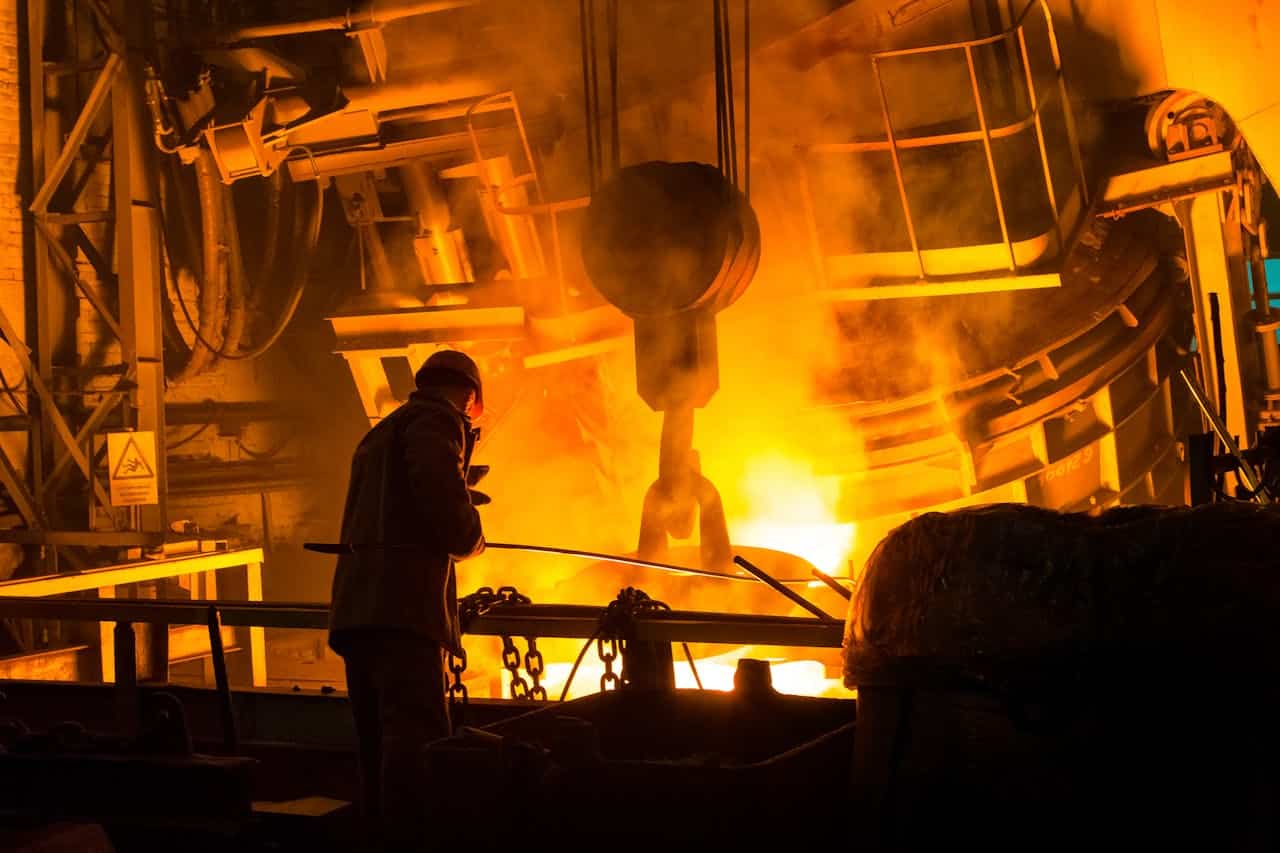Canadian Uranium Stocks Could Participate in Energy Transition
Key takeaways
Canada is a uranium powerhouse – With the Athabasca Basin hosting some of the world’s richest uranium deposits, Canadian companies like Cameco and NextGen Energy are at the forefront of the global nuclear energy supply chain.
Uranium prices are driving investment – Rising demand for nuclear energy and supply constraints have pushed uranium prices higher, benefiting miners, developers, and even physical uranium trusts like Sprott.
Different stocks for different strategies – Investors can choose between speculative explorers like Fission, near-term producers like NextGen, established giants like Cameco, or pure uranium exposure through Sprott’s trust, depending on their risk tolerance.
3 stocks I like better than the ones on this list.Canada holds an **abundance of resources**, making it no shocker that the Toronto Stock Exchange is packed with **cyclical companies** such as those dealing with oil, gold, and uranium.
In this article, we will focus on the uranium end of things, including why the world is bullish on uranium, what it’s used for, and why some of the top uranium stocks to buy today are located in Canada.
The best uranium stocks to buy right now
An emerging uranium producer
Paladin Energy (TSE:PDN)

Paladin Energy is an Australian-based uranium company with a primary focus on restarting and operating the Langer Heinrich Mine in Namibia. The company previously suspended production due to weak uranium prices but is now gearing up for a strong comeback as the uranium market rebounds. With a large-scale, low-cost project and growing global demand for nuclear energy, Paladin is positioned as a key mid-tier uranium producer.
P/E: –
5 Yr Revenue Growth: -%
5 Yr Earnings Growth: -%
5 Yr Dividend Growth: -%
Yield: -%
Developing the massive Arrow uranium deposit in Canada
NextGen Energy (TSE:NXE)

NextGen Energy is a leading uranium developer, best known for its world-class Arrow deposit in the Athabasca Basin. Arrow is one of the largest and highest-grade uranium projects globally, boasting an estimated 338 million pounds of U3O8. The company is progressing toward production and is widely seen as a future major uranium supplier.
P/E: –
5 Yr Revenue Growth: -%
5 Yr Earnings Growth: -%
5 Yr Dividend Growth: -%
Yield: -%
Related
Canadian Gold Stocks

A pure-play investment vehicle for physical uranium
Sprott Physical Uranium Trust (TSE:U.U)

Sprott Physical Uranium Trust (SPUT) is not a mining company but rather an investment fund that holds physical uranium. It gives investors direct exposure to uranium price movements without the risks of individual miners. SPUT actively buys and stores uranium, reducing available supply and potentially driving prices higher.
P/E: –
5 Yr Revenue Growth: -%
5 Yr Earnings Growth: -%
5 Yr Dividend Growth: -%
Yield: -%
The world’s largest publicly traded uranium producer
Cameco (TSE:CCO)

Cameco is the go-to name in uranium, with operating mines in Canada and Kazakhstan. As one of the world’s largest uranium producers, the company has long-term contracts with utilities and benefits from rising uranium prices. With a strong balance sheet and production ramp-up plans, Cameco is a dominant force in the sector.
P/E: 113.8
5 Yr Revenue Growth: 11.0%
5 Yr Earnings Growth: 15.5%
5 Yr Dividend Growth: 14.9%
Yield: 0.2%
The bottom line on uranium stocks
It’ll take a significant increase in nuclear power for these uranium stocks to be a good investment.
Fortunately, it sure looks like that’s coming. However, there will still be plenty of controversial reports and environmentalists who think the path to a greener future doesn’t go through nuclear energy.
But the case can be made. It is a perfect transition away from fossil fuels on the path to zero-carbon energy sources. If that plan is implemented, the demand for uranium miners and the refinement, manufacturing, selling, and drilling for uranium will undoubtedly increase.
Just understand that these investments are not for the defensive investor. A company like Cameco is cash flow positive but is far from reliable. And speculative investments like the pre-revenue exploration and mining companies on this list are ones you really need to figure out if they fit within your risk tolerance.
How big of a uranium player is Canada?
Currently, Canada is the second-largest uranium producer globally, accounting for around 13% of total global output. It also has the world’s largest deposits of high-grade uranium. The quality of its uranium deposits is 100x greater than the world average.
Remember that it’s important to note we’re talking about high-grade deposits, not total deposits. For that, Canada comes third, behind countries like Australia and Kazakhstan.
With Canada being one of the biggest producers, you’d think it’s a very popular commodity. However, the industry is much smaller than you’d think.
The Government of Canada states that the mining and milling of uranium is only an $800M a year industry, employing just over 2000 Canadians.
Compare this to the oil and gas industry, which employs over 80,000 Canadians. You can see that although Canada is one of the global leaders in uranium production and uranium exploration, it is still a relatively small industry. Why?
The slow adoption of nuclear power weighs on uranium stocks, but maybe not for long
Uranium is primarily used to generate nuclear power. Nuclear power over the years has faced some harsh criticism from environmentalists and the like, and for a good reason.
The Fukushima nuclear power plant incident in 2011, the most severe nuclear accident since Chernobyl, soured nuclear power generation for many countries.
Many countries put nuclear reactors and power plants on standby after the incident. They’re still not up and running today. However, it is regaining its footing in recent times.
Even though Canada is one of the largest uranium producers and has the world’s largest deposits, over 85% of our uranium is exported. We utilize very little nuclear power here, as it accounts for only 15% of our total electricity generation.
This would be the opposite strategy of a country like Argentina that produces no uranium, importing all of its demand.
The central thesis for uranium and nuclear power, in general, is to provide a stepping stone from fossil fuels to renewable energy. Many don’t believe an immediate switch is possible. With nuclear power having a relatively low carbon footprint, this makes sense.
The bullish case for Canadian uranium stocks
There is one main reason investors looking to buy stocks should be bullish on Canadian uranium companies. That is nuclear power’s massive potential.
As mentioned above, nuclear is a green energy that doesn’t get nearly the attention of other environmentally friendly energy solutions. Yes, nuclear plants are expensive to build in the first place. Still, once the asset is in place, it’s an incredibly efficient way to produce energy for decades.
However, there are also two main downfalls to nuclear energy. The first we went over above is a risk of a meltdown. However, this is something that increases in technology have minimized over the years. Nuclear energy is not 100% safe, but it’s pretty darn close.
The other downfall is nuclear waste, but today’s efficient reactors hardly generate any waste. Even with these downfalls – which have been improved significantly over the last couple of decades – nuclear is still a great power source that doesn’t get nearly the attention it deserves.
Is this a long-term solution to our energy woes? No, not necessarily. But, it certainly looks appealing in the short to mid-term as we transition away from dirtier forms of energy like coal.
Is there a uranium ETF?
Picking individual uranium stocks, especially pre-revenue ones and firmly in the exploration stages, poses significant risks.
You’ll likely face significant capital losses if you’re wrong about the horse you’ve bet on. So, many decide to invest in a uranium ETF to gain exposure to the entire uranium mining sector.
I tend to look at the Global X Uranium ETF, which trades under the ticker URA. There aren’t enough uranium producers here in Canada to warrant an ETF. So, we do have to head south of the border.
But just because this is a US-listed ETF doesn’t mean it doesn’t contain some of the best Canadian uranium stocks. It has most of the stocks listed below, including some additional ones like Denison Mines, Global Atomic Corp, and Energy Fuels. Feel free to check it out if you’d like.
But if you’re interested in picking individual uranium stocks, let’s move on to some of the top opportunities in Canada today. For the most part, we’ll organize this list from most to least speculative.

